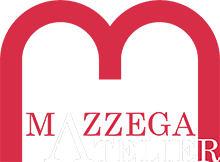The glass panels
The glass panels are totally handmade in our furnace.
The process consists in straining the liquid glass at a temperature between 1200°/1400 ° C and pressed into metal forms.
They will be then temperated gradually for 48/72 hours.
At last the raw panels will be wire grind to correct all the imperfections and polished.
Golden leaf
The gold leaf is a very ancient technique inherited from the bizantin culture. The gold is fused at a temperature of 1750° C strained and laminated in stripes that are cut into squares.
Those are then beaten to obtain the leafs. The final product is the result of synergy between the strenght of the men who beat the leaf and the delicacy of the women who cut them.
Those leaves are laid down on the glass ready for the etching.
Gold etching
The gold etching is a very delicate part since the gold leaf is very thin (about 0.4 millimeters) and no error is permitted, because the sign made cannot be cancelled in any way.
It is done by a pencil that instead of the graphite has a steel needle.
When the incision is finished the glass panel is cooked.
Painting with enamels
Painting on glass has several difficulties. The enamels used are not malleable as in oil painting on canvas and the color rendering is altered in the subsequent firing. The skill of the artist also lies therefore in predicting what the final result will be. This phase, together with the etching, is the one in which the artistic part excels over the entire execution and allows the maximum stylistic expression to the Master.
Cooking in oven
The oven, called “muffola”, reaching the temperature of 525 degrees, fixes the gold leaf to the glass. The gold, a precious and noble material, is thus united with the glass forever.
With a similar process, but with a lower temperature so as not to reach the casting, the glazes are also fixed to the glass. The whole process of worming-up and cooling-down can take up to 24 hours.

